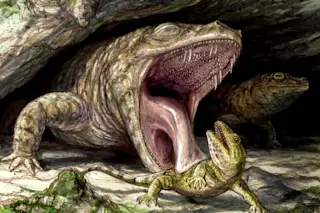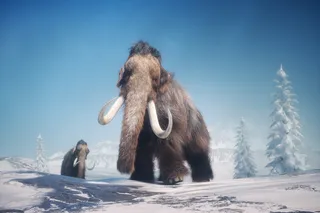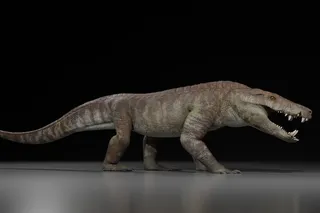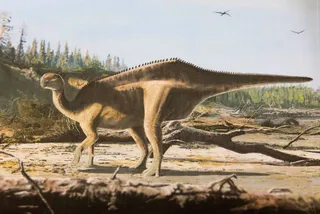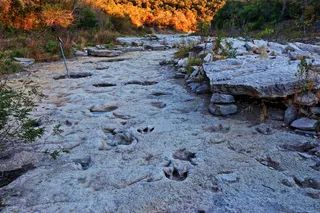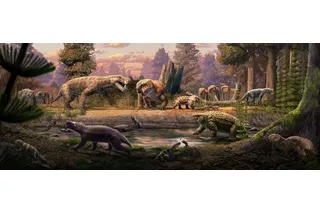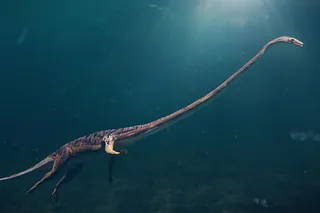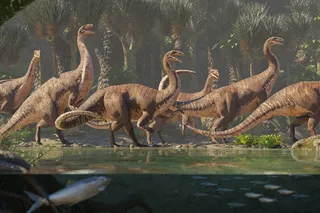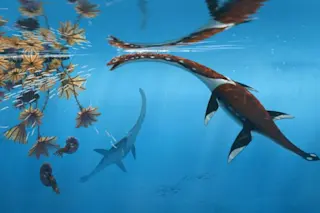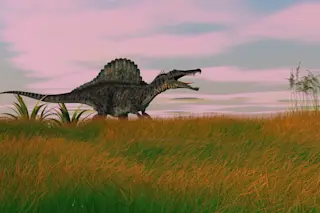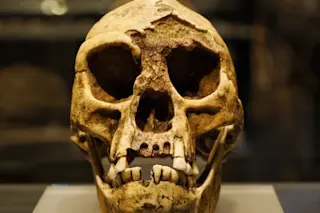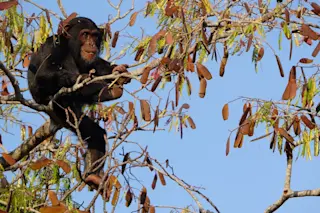Of all the animals facing a major mass extinction event 252 million years ago, it is perhaps appropriate that frog-like creatures were able to bounce back.
The amphibious nature of proto-frogs called temnospondyls provided a food-seeking edge, according to a study in the journal Royal Society Open Science.
Conditions during the Early Triassic were harsh. Repeated volcanic activity triggered long periods of global warming, aridification, reductions in atmospheric oxygen, acid rain, and widespread wildfires. The tropics became devoid of animal life, and as much as 90 percent of animal species went extinct.
So how did the remaining 10 percent survive? While those conditions rendered much of the land a not-very-happy hunting ground, the temnospondyls’ generalist approach served them well. They found plenty of food in fresh water habitats, while their land-based competition starved.
“These were predatory animals that fed on fishes and other prey, but were primarily linked to the ...


